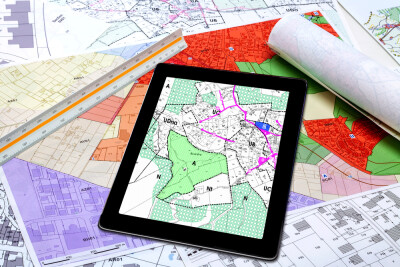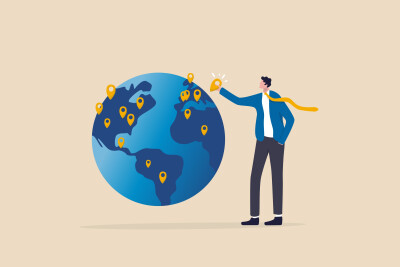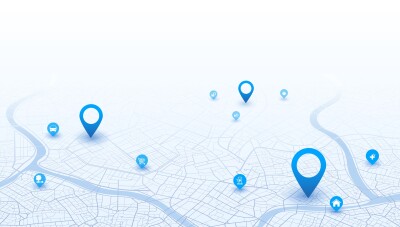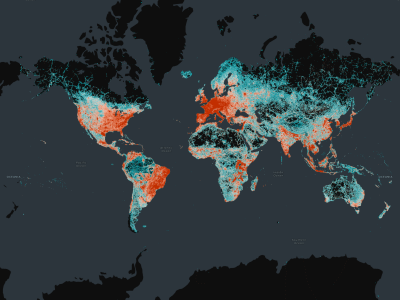One of the biggest stories we’ve been following closely at Geo Week News over the last couple of years has been the formation and subsequent growth of the Overture Maps Foundation. Originally announced back in December of 2022, Overture was developed with description of “new collaborative effort to develop interoperable open map data as a shared asset that can strengthen mapping services worldwide.”
Since its official founding, the organization has moved extremely quickly, particularly when you consider it is made up of some of the largest companies in the world. Its founding members, to give some idea of that, were Meta, Amazon, Microsoft, and TomTom. Still, less than two years since that original announcement, the organization announced earlier this summer their first general availability of their open map data. There is still, of course, a long road ahead with new datasets being added, but a lot of the initial work is done. Now, the next step is seeing who starts to implement this data into their own maps, and how they do it.
Among the biggest early examples of this adoption is from one of those founding members, TomTom. They were, of course, a big part of pulling Overture together in the beginning, and Geo Week News spoke earlier this year with TomTom SVP of Engineering Maps, Mike Harrell, about that process of getting Overture off the ground. More recently, Geo Week News had the opportunity to speak with Willem Strijbosch, TomTom VP of Product for Maps and Search, about the company’s 2024 release, Orbis Maps.
Originally launched in Western Europe and North America late last year and globally in May of this year, TomTom’s Orbis Maps platform is built upon the open base data from Overture. As described on their website, “TomTom Orbis Maps starts with a base of interoperable, reference map data, that we create as part of the Overture Maps Foundation. From here, you can effortlessly combine your own datasets with high-quality open and proprietary map data layers validated by our AI native platform. And layer by layer you can conquer your biggest challenges.”

Strijbosch expands upon that in conversation with Geo Week News, explaining that Overture is able to provide that crucial base layer on which both TomTom and their customers can add in their own data where they see fit. He said, “That’s what we see in Overture, is that it’s what you can attach stuff to.”
One example he points to is address data. As was announced at the same time as the initial general availability, Overture also added address data into their open dataset. However, that open data does not yet cover the entire world. Some of TomTom’s customers may want that full data, and they are able to add that in with paid sources on top of the base data provided by Overture.
“We build our platform to be incremental,” Strijbosch explained. “Meaning you can make a single change, and you can get that into an application very quickly – in a matter of minutes – if it passes all checks. That’s another thing customers are asking for. If I give feedback, I want them to be processed quickly. That’s what we do as well, and how we build on Overture.”
That’s what TomTom views as perhaps the most important feature with Orbis Maps, taking that open data being provided by Overture and being able to build in other crucial data on top of it to fit their customers’ variety of needs. Right now, that data is being added in by TomTom themselves, but Strijbosch notes that they are working on features for customers to add in their own data sources. He says that they are in the process of testing these capabilities with some customers and seeing how they use APIs to the platform, noting that it will be available “in the future” as a commercial offering.
While a significant chunk of the TomTom is in the automotive industry – roughly 50-60 percent – users of Orbis Maps can run the gamut. One other example Strijbosch gives is governments, who can use this platform for disaster response, taking that base map and quickly making changes that can be updated for all stakeholders to see nearly instantly. So, if a road is closed, or traffic is being directed one way on a certain road for evacuation, Orbis users are able to update their maps quickly with that information.
Strijbosch notes that the Australian Government has already been using Orbis in response to flooding and other disasters, as announced earlier this summer.. Geo Week News reached out to the Australian Department of Defence for more information about how exactly they are using this platform.

In an email response, an Australian Defence spokesperson said, “Australian Geospatial-Intelligence Organisation (AGO) is the lead agency for geospatial data, information and intelligence within Defence and the National Intelligence Community. Defence geospatial data is collected, processed and disseminated via geographic information systems, the outputs of which are available to Defence and the National Intelligence Community.
The acquisition of the East View Geospatial dataset will support small scale mapping, and includes topographic feature data captured as vectors and generalised for use at a global scale. This dataset will enable AGO to support the Australian Defence Force in military exercises, operations, and Defence in carrying out other functions.”
Looking ahead, Strijbosch is excited about the future for both Orbis and the open map ecosystem being championed by Overture. On the Orbis side, he sees this current boom around AI, and specifically generative AI, as having a place for navigation maps. He gives an example of taking a road trip with an electric vehicle, and asking a built-in LLM to find a place to charge said vehicle where a vegan lunch is also available.
In terms of the open map data and Overture more generally, there is a lot of excitement about how that will develop. He acknowledges that true wide adoption will certainly take time, but ultimately companies will realize the value. Not everyone is good at everything, but everyone has areas of expertise where they can contribute while deriving value from areas where others hold the expertise.
“Ultimately, the map of the future will require billions of investments per year that can only be worn by multiple companies together that bring in the data that they have, that they can commercialize, all on the same base,” Strijbosch said. “That is what’s groundbreaking, because now suddenly it’s not locked into a walled garden. We foresee that Overture will attract a lot of other companies. These things take time, but it will ultimately be the leading map ecosystem in the world.”






